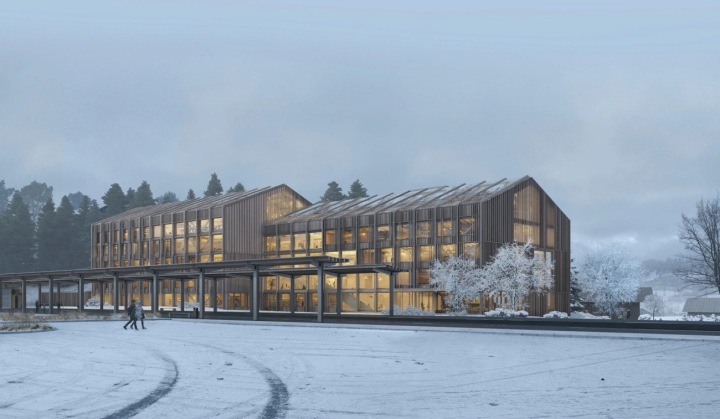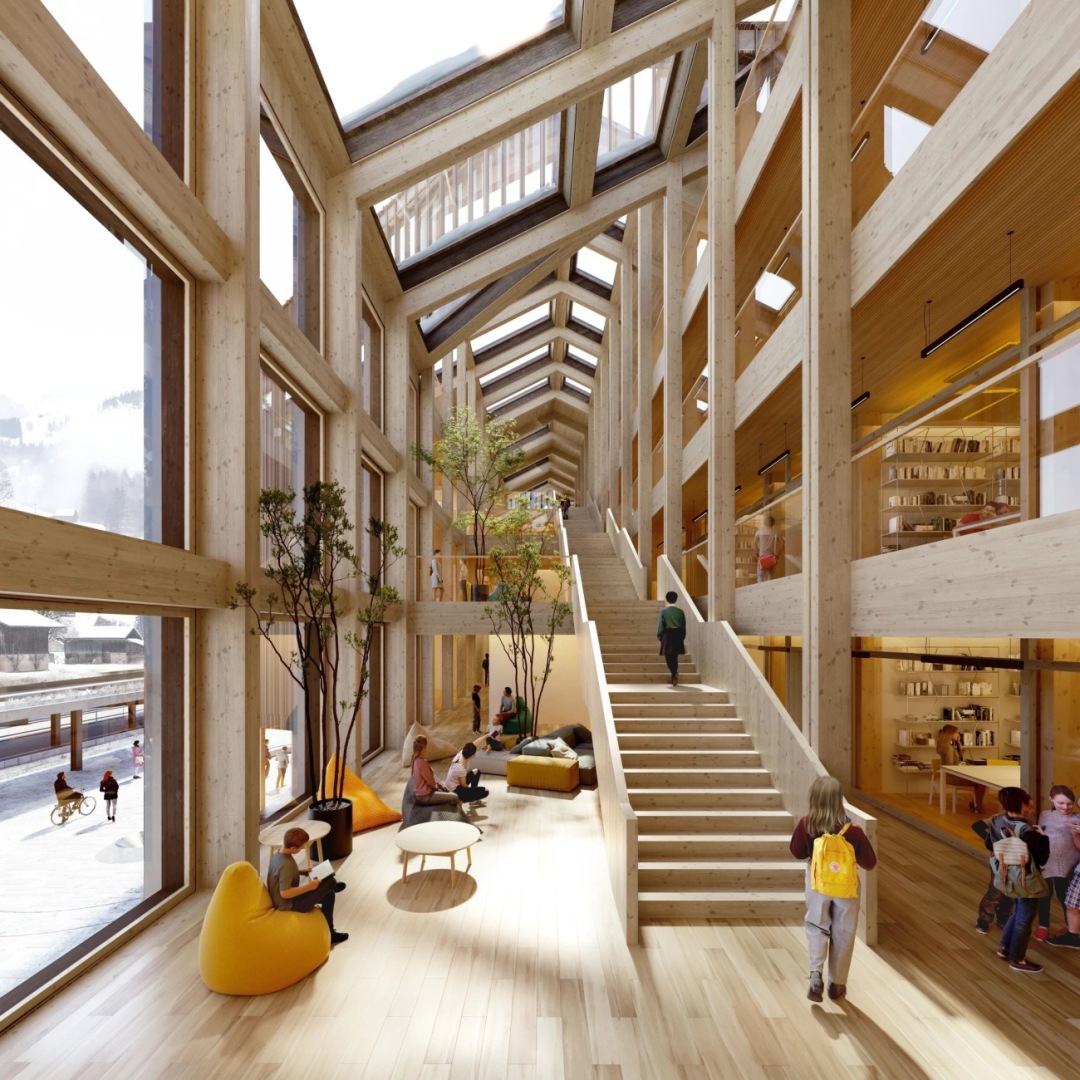These are the plans for the new Campus Village
19.01.2024 Local News, Architecture, Le Rosey, NewsUpdateInstitut Le Rosey needs more space, and after a long planning phase and various projects, they have now found their location next to Gstaad railway station. The public consultation for the Campus Village is over, and mostly positive reactions have delighted the institute’s owners, Christophe and Philippe Gudin. The project is now undergoing a preliminary review by the canton.
In addition to a library, a gymnasium, a multi-purpose hall, art and music rooms, and a small cafeteria, the building will be used primarily for school lessons. The classrooms differ in size and can be flexibly adapted to the needs of the respective classes. The Campus Village is designed for around 550 pupils, says General Director Christophe Gudin.
Le Rosey has had its winter centre in Gstaad and throughout the Saanenland since 1916. The girls’ dormitories are in Schönried near the railway station, while the boys’ dormitories are in Gstaad on the Ried and in the accommodation buildings of the sports centre. Today, the classrooms are also located in the buildings in Gstaad. Due to the growing number of pupils and requirements for school lessons, the institute lacks sufficient and suitable classroom space and additional accommodation, which is why the owners – Philippe and Christophe Gudin – are considering a new project. Planning for another location in Saanenland has been underway since 2005.
Collaborative Design Process
The regional company Jaggi Architektur und Innenarchitektur developed the new building project with Snøhetta, an international architecture firm based in Oslo. “The collaboration with Snøhetta is enormously instructive, intensive and exciting for me,” says Jaggi architect Elisabeth Wampfler. Although the company is known for its designs and architecture, these experts also have an enormous amount of technical knowledge, particularly in the construction of public buildings. Wampfler is the project manager and architect on site, who contributed her expertise in Alpine construction, particularly the prevailing laws and building regulations. She also knows the Institut Le Rosey and its requirements. “This is no ordinary school because it has specific needs. The Snøhetta architects took this into account.” Philippe Gudin confirms Wampfler’s observation: “Working with star architects is often stressful because they want to impose something on you. But these architects listened to us and understood what we needed. The project is therefore well-founded.” How did the collaboration with this world-renowned company come about? “Philippe and Christophe Gudin asked me who I would like to work with at the start of the project. I answered straight away: it should be Snøhetta.
Investment and Minicipal Council Approval
Philippe Gudin assumes an investment volume of around 60 million francs. The municipal council still needs to finalise the form in which the municipality will hand over the building land to the Le Rosey Institute. Still, it will determine this in preparation for the planned municipal assembly. The aim is to present the matter to the municipal assembly in September 2024.
The institute will start construction if the citizens approve the proposal and the building permit is granted. “We would aim to use the Campus Village in January 2028. We expect construction to take around two years,” explains Christophe Gudin.
It has been a long journey for Institut Le Rosey to get here: the international school has planned a new campus in Saanenland since 2005.
When the “Les Arts” project next to the Gstaad train station didn’t materialise, the Saanen municipal reached out. “It came as a surprise, and at the same time, we were overwhelmed that the municipality proposed this site to us because it is in the centre of Gstaad,” recalls Philippe Gudin. The proximity to the Ried, where the majority of the Le Rosey buildings are located, was also a particular advantage.
The village of Gstaad is the campus.
The new location prompted Christophe and Philippe Gudin to rethink and redefine their idea of a pure campus. “Gstaad, and the entire village is now our campus, we said to ourselves. Everything is close by, such as the cable cars for skiing, the ice rink area for leisure activities or the restaurants for breakfast or a break,” explains Christophe Gudin, adding with a laugh: “In the end, it is and will remain a love story between Gstaad and the Institut Le Rosey.” His father agrees - they would have been reluctant to consider an alternative to Gstaad. “The school decided in favour of the winter campus in Gstaad in 1916 because those responsible wanted to escape the winter fog of Rolle in Vaud and also wanted to take the students out into nature.”
In terms of construction and architecture, Snøhetta and the local architects Jaggi focussed on a pure timber construction with a concrete base. Renewable energies such as a photovoltaic system and a heat pump will supply the building with electricity and heat. Large windows will bring warmth and light into the building, explains Jaggi architect and project manager Elisabeth Wampfler.
The building will continue to be used after the winter season when the students return to Rolle, explains Christophe Gudin. “On one hand, the John F. Kennedy School can use our premises for its school operations; on the other hand, the hotel industry and tourism should also benefit from this building.”
Institut Le Rosey plans to organise a public information event about the new building project. The time and location will be announced as soon as possible.
BASED ON AVS





